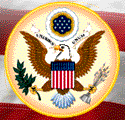 [Presidential Decision Directives - PDD]
[Presidential Decision Directives - PDD]
TEXT NOT AVAILABLE
The NPR assumes that the START I Treaty and START II protocol will be fully implemented. However, the Russian parliament has not yet ratified the Strategic Arms Reduction Talks [START] II Treaty, and it is uncertain when it will do so. The NPR codified the national policy of lead and hedge as the approach to nuclear weapons and the attendant technology infrastructures. The policy of lead and hedge means that the US will lead strategic arms control efforts toward START II or smaller force levels, but retain the ability to hedge by returning to START I levels. It is US policy as part of this strategy that until START II ratification and entry into force, the US will draw down and maintain strategic forces at warhead levels consistent with START I. However, since the START II protocol is not scheduled to be fully implemented until 2003, the NPR strategy protects the US option to reconstitute to START I levels should unfavorable events occur in the former Soviet Union.
Under START II, the United States would reduce strategic forces to one type of SSBN, one type of ICBM, and two types of bombers. Upon ratification of START II, DOD will make further reductions and eventually eliminate all land-based multiple re-entry vehicle missile systems, retiring the entire Peacekeeper force and reduce the number of warheads on each Minuteman III from three to one. In 2003, under START II limits, U.S. strategic nuclear forces will be comprised of the following forces:
The Nuclear Posture Review revalidated the need for ICBMs and SLBMs. As a result, DOD performed extensive studies to identify how to can keep ICBMs and SLBMs on alert for decades to come.
Although primarily a DoD document specifying DoD plans for platforms and systems, the NPR instructs the Department of Energy to realign its efforts and capabilities to support those revised requirements. The START treaties only control the number of strategic nuclear weapons that can be loaded on treaty-specified and -verified strategic missiles and bombers. These nuclear weapons are limited to 6,000 by the START I Treaty and 3,500 by the START II protocol. The treaties do not control the total stockpile size or the composition of strategic and nonstrategic nuclear weapons of either side. The US stockpile will be larger than 6,000 under START I and 3,500 under START II since the stockpile also includes retaining weapons for nonstrategic nuclear forces, DOD operational spares, and spares to replace weapons attrited by DOE surveillance testing. In the START II case, the stockpile may also include retaining weapons to reconstitute to the START I level.
The DOE, with assistance from the DoD, is pursuing a Stockpile Stewardship and Management Program (SSMP) to meet NPR requirements. The United States has observed a moratorium on nuclear testing since 1992. The NPR strategy reflects this policy and the strategy has a significant effect on shaping the Stockpile Stewardship and Management Program. It is anticipated that repairs or replacements to an aging US stockpile will be needed. Assesument and certification of the safety and reliability of stockpile repairs or replacements without nuclear testing is a significant challenge to the Stockpile Stewardship and Management Program. The NPR contains infrastructure requirements for the Department of Energy to ensure high confidence in the enduring stockpile, namely: